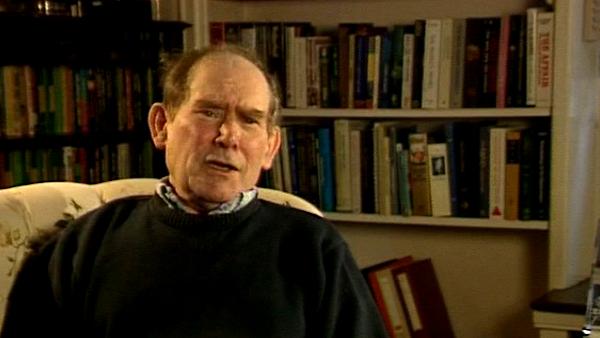NEXT STORY

Digital and analogue analogies
RELATED STORIES

NEXT STORY

Digital and analogue analogies
RELATED STORIES


|
Views | Duration | |
|---|---|---|---|
| 191. Links between the Human Genome project and Caenorhabditis... | 140 | 03:43 | |
| 192. I am a strong believer in the value of ignorance | 188 | 03:47 | |
| 193. Wanting a new and challenging problem to study | 124 | 03:28 | |
| 194. Thomas Hunt Morgan and Drosophila | 292 | 01:12 | |
| 195. How to study development? | 1 | 127 | 05:01 |
| 196. How do genes control development? | 120 | 03:09 | |
| 197. Digital and analogue analogies | 130 | 03:50 | |
| 198. 'Have A Look' biology | 150 | 05:11 | |
| 199. Reading rots the mind | 357 | 04:00 | |
| 200. How do I deal with a saturated memory? | 205 | 03:59 |


Nobody seemed to be very interested in connecting up development with the genes. There was a complete gap between these. And when people began to think about this and began to think that perhaps genes... how, in what sense could genes be considered the units of development, it became clear that that was a non-question. The units of development are cells. And our job is to ask how do genes get hold of the cells, if I can put it in that way. Because that's the way the genes must go through to the developmental process, and indeed to all the complex phenotypes of organisms. They have to get hold of the construction machinery of these... of the organs in order to express their effects. However, the gradients was very interesting, because what impressed Francis is that he made a quick calculation about the sizes of these things. He didn't know the sizes of imaginal discs, so he quickly looked them up, and he made a calculation which is really what Francis is very good at, as to whether diffusion of an average sized small molecule could account for the results because that would... could only operate at a certain scale. That is, it would be very hard... it would take too long to establish something by diffusion if, let us say, it was 10 feet wide. And you wouldn't want to do this if it was just, let us say, 100Å. But this was in the scale of sizes that... that could be done by diffusion. And so Francis got very interested in asking whether you could account for positional information that Lewis was discussing in terms of a process of diffusion. So one had a very simple model then which was that one had a... a source — that is some cells that created this soon became a diffusible morphogen — and you had a sink at the other end and this molecule distributed itself at a... in the form of a gradient across this. And then the idea was that the cells would read this gradient and decide what it is they were going to be. And so you had a lot of discussions as to whether... of course you then had to have set a threshold in each of the groups of cells and of course you can ask how accurate you can do this.
South African Sydney Brenner (1927-2019) was awarded the Nobel Prize in Physiology or Medicine in 2002. His joint discovery of messenger RNA, and, in more recent years, his development of gene cloning, sequencing and manipulation techniques along with his work for the Human Genome Project have led to his standing as a pioneer in the field of genetics and molecular biology.
Title: How do genes control development?
Listeners: Lewis Wolpert
Lewis Wolpert is Professor of Biology as Applied to Medicine in the Department of Anatomy and Developmental Biology of University College, London. His research interests are in the mechanisms involved in the development of the embryo. He was originally trained as a civil engineer in South Africa but changed to research in cell biology at King's College, London in 1955. He was made a Fellow of the Royal Society in 1980 and awarded the CBE in 1990. He was made a Fellow of the Royal Society of Literature in 1999. He has presented science on both radio and TV and for five years was Chairman of the Committee for the Public Understanding of Science.
Duration: 3 minutes, 10 seconds
Date story recorded: April-May 1994
Date story went live: 29 September 2010